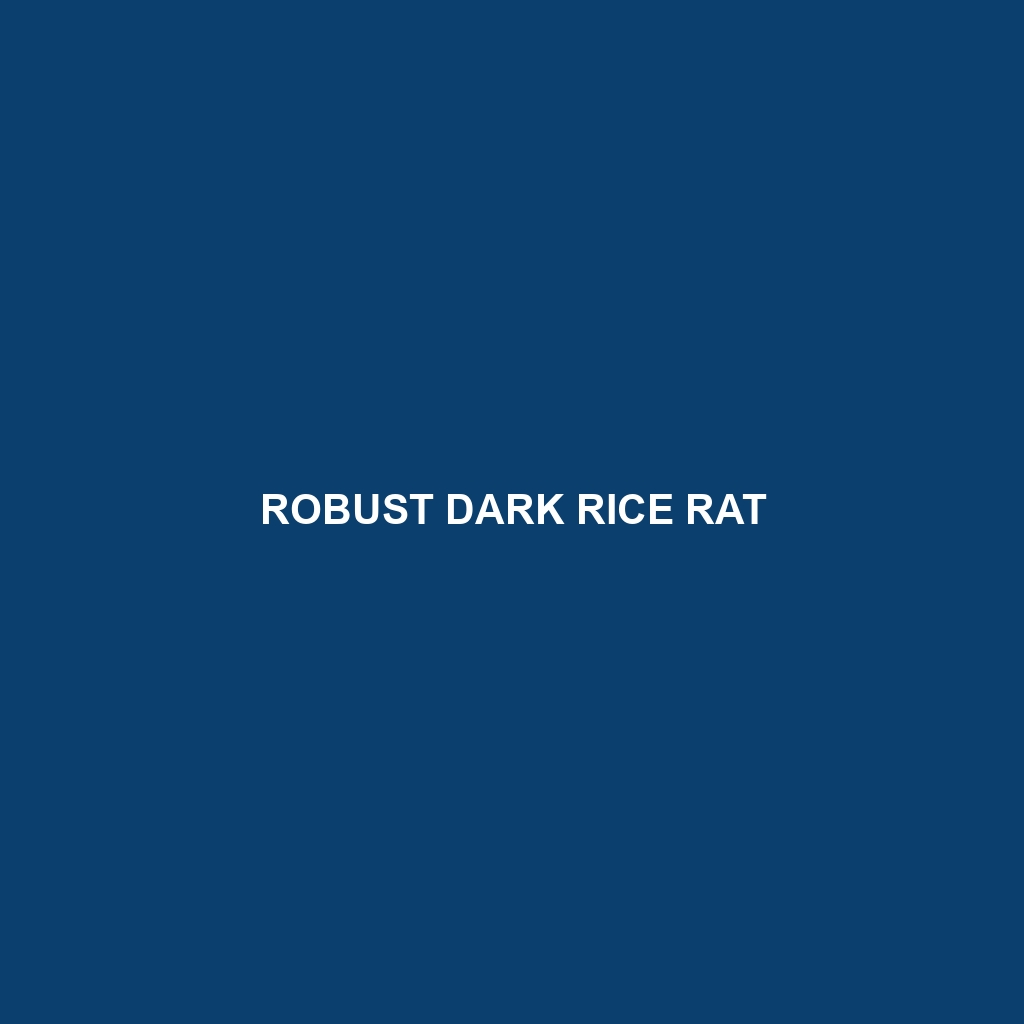Common Name: Robust Dark Rice Rat
Scientific Name: Oryzomys robustus
Habitat:
The Robust Dark Rice Rat is primarily found in the humid tropical regions of Central and South America. Its preferred habitats include wetlands, rice fields, and marshy areas, where dense vegetation provides ample cover. This species is particularly prevalent in areas of Panama, Colombia, and northern parts of Ecuador, demonstrating a strong association with both natural and agricultural ecosystems.
Physical Characteristics:
The Robust Dark Rice Rat is a medium-sized rodent, typically measuring between 25 to 30 centimeters in length, excluding the tail. Characteristically, it has a robust body with a round head, short ears, and a long, hairy tail that is approximately the same length as its body. The fur is a rich dark brown coloration, often appearing almost black, which helps this species blend into its shadowy habitat. Notable features include its strong claws, adapted for climbing and digging, and its large, expressive eyes.
Behavior:
This species is mostly nocturnal, showcasing active foraging behaviors during the night. The Robust Dark Rice Rat is known for its agility, often climbing trees and foraging among the underbrush. Socially, it tends to be more solitary, although it may be found in small family groups. This species is also known for its ability to adapt to changing environmental conditions, showing resilience in its behavioral patterns.
Diet:
The diet of the Robust Dark Rice Rat primarily consists of seeds, grains, and plant material, making it an important seed disperser within its ecosystem. It has a particular preference for rice and can often be found foraging in agricultural fields. Additionally, it will consume fruits and insects, displaying omnivorous feeding habits that allow it to thrive in diverse environments.
Reproduction:
Typically, the Robust Dark Rice Rat breeds year-round, with peaks during the rainy season. Females can produce several litters annually, each containing 3 to 8 young. The young are born blind and hairless, relying on maternal care for survival during the early weeks. As they mature, they develop the independence required for survival in the wild, often becoming sexually mature within just a few months.
Conservation Status:
The current conservation status of the Robust Dark Rice Rat is classified as not endangered, although habitat destruction and agricultural expansion pose ongoing threats. Conservation efforts are essential to monitor populations and sustain their natural habitats, ensuring that these adaptable rodents continue to thrive.
Interesting Facts:
One fascinating aspect of the Robust Dark Rice Rat is its remarkable swimming ability, which allows it to navigate flooded areas effectively. Additionally, its contribution to seed dispersal plays a vital role in maintaining the health of its ecosystem, emphasizing its ecological importance.
Role in Ecosystem:
The Robust Dark Rice Rat serves as both prey and seed disperser within its habitat. Predators such as birds of prey and larger mammals rely on this species for sustenance, while its feeding habits promote plant diversity and regeneration within the ecosystems it inhabits. This vital interaction underscores the rat’s importance in maintaining ecological balance.
